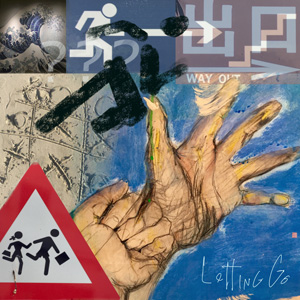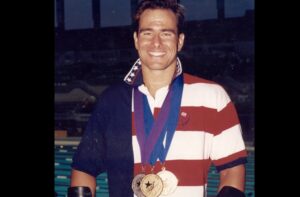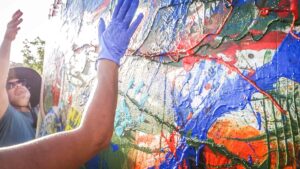By Carin Knoop & Bahia El Oddi
“Making art allows the lava of emotions pent-up inside of me to flow out slowly, avoiding an eruption. I fear that if people don’t express themselves creatively, all the natural frustrations of life will boil up and burst out uncontrollably, with less-than-ideal repercussions.” — Gregory Burns
Many of us search out outlets for our pent-up lava, while seeking to reset and refresh as we deal with evolving emotional and mental health challenges. Our ubiquitous smartphones and computer screens are accentuating our stress while online programs and apps sell us well-being and mental health as easily downloadable and consumable. But technology and deep emotions are rarely best friends. Perhaps it is time to challenge the status quo and try something more…human? Maybe a pencil or paintbrush can be our new best friend.
Art is intrinsically linked to humanity. Humans have been making it for as long as we have walked the planet, and few would argue against its value as culturally enriching as well as emotionally and intellectually rewarding. Just as a painting or a song can say something that defies description, art therapy uses the power of creative expression to tackle our emotional challenges through understanding, self-discovery, and expression. Engaging with the arts can indeed benefit both mental and physical health, concludes the World Health Organization (WHO) after conducting “the most comprehensive review of evidence” on the subject to date.

‘Amilla 15’ 48x72in by Gregory Burns
Arts as a Journey of Self-discovery
In 1958, when he was one, polio paralyzed Gregory Burns from the waist down. At the age of 5, Dr. Adams told Gregory that he would never walk again (unassisted by braces and crutches) and that he should not get fat (as carrying extra weight while ambulating with braces and crutches wasn’t ideal). So Gregory decided early on that he would adapt and learn to do with his arms what others did with their legs. He took to the water and learned to swim. He was also given paints and art lessons and took solace in sketching and creating. Growing up with a disability and being different from his peers, Gregory processed feelings through drawing and painting. When his family moved to Paris, the toddler found escape and passion painting bottles of Beaujolais and slices of French bread. Over the decades, he has filled over 100 sketchbooks with scenes from the 60 countries he has traveled through.
Like swimming, art guided Gregory’s journey. Hard work, optimism, and a thirst for life became the ingredients of his success. What started with pen and ink drawings of nature in sketchbooks gradually transformed into large-scale commissions across the globe. Since 1980, he has held 80 solo and group painting exhibitions in 15 countries and has been the celebrated Artist-in-Residence at 40 venues worldwide.
All the while he was competing as a swimmer. By 2000, Burns had set a dozen world and American records. He represented the United States in the 1992, 1996, and 2000 Paralympic Games, winning two gold, two silver and one bronze medal. In 2016 he was honored with the Sports Artist of the Year Award from the United States Sports Academy.
Atlanta Paralympics 1996
But his increasing professional recognition in the art world never changed his singular belief that art heals. “When I graduated from college, the floor fell out of my world. Instead of seeking out a therapist, I dove into swimming pools and/or puttered with paints. If I started a painting while burdened with doubts and fears, I found myself calm and focused an hour later just from making art. Painting and swimming are my enablers, they have stimulated me to surpass my emotional and physical limitations.”
“You use a glass mirror to see your face. You use works of art to see your soul.” — George Shaw
The world as our studio
The world is Gregory’s studio. Besides beaches and mountaintops, favorite locations include sacred sites that have welcomed people for centuries, ranging from Muslim mosques to Buddhist temples and Catholic cathedrals. In these spaces, making art can become a spiritual practice, a channel to access the deepest layers of life and of the self. “Art goes beyond passive observation — it is a kind of prayer or mediation where we connect with our internal and higher spirituality.” Engaging in the creative process can help us lift our spirits, silence negative thoughts, and build resilience and self-esteem.
Yet, art is not always a comfortable journey like drifting down some quiet river. As with everything in life, art is a cycle, with its highs, lows, climaxes and plateaus. It is a roller coaster where we can feel peace, anger, frustration, pain and uncertainty all while working on our art. Ultimately, if we keep going, we reach some point of resolution and peace with what we have created and ourselves. Through this journey of self-discovery, the healing power of art is truly revealed — by pushing us to face our inner doubts and embrace or destroy them … ultimately we rise from the ashes or our search.
Art at Work
“Company values are usually pieces of paper with words on them. Painting these values forces us to embody and internalize them.” — Gregory Burns
Today, Gregory is using his journey and experience to support others in their healing process. He inspires individuals and organizations to go beyond their limitations, challenging audiences to question their excuses and doubts. Gregory’s interventions reveal the power and potential of art to heal and build more resilient, connected teams.
With unique, innovative, and empowering team-building events for groups of up to 1,000, Gregory helps organizations reimagine and reinforce their values by creating artwork that people craft in a collaborative effort that is a testament to the team and their objectives. The process of visualizing, humanizing, and personalizing a shared culture creates a strong connection and trust among individuals, pushing everyone to step outside their ‘default’ lives and to become immersed in a creative journey of discovery.
Corporate team building workshop artwork- California
Through art making, Gregory energizes us to embrace a series of “human activities and key performance indicators.” But he recognizes that the magic of art is also what makes it challenging: there is no right or wrong, no perfect pirouette, no prescription, no pre-conceived answer. As in every mindful creative process and spiritual journey, art is focused on connecting with our inner and higher self, facing and going though our fears, and ultimately questioning and re-imagining our lives. It is all about building emotional well-being and intelligence.
Corporate team building workshop artwork- France
How can you engage your team and colleagues in artistic and creative expressions?
Activities based on art therapy approaches have proved to be powerful tools to connect people in a way that meaningfully and effectively addresses the strengths and needs of a diverse range of individuals. By enabling team members to express internal conflicts while facilitating their ability to implement change, art-making promotes healing and relationships. Creative arts therapy approaches are fun and effective ways for people to flourish as individuals and team members by acknowledging that we all experience life and work differently.
Corporate team building workshop artwork- USA
Dedicate and schedule time for arts during the day to reenergize. Take a break to discover your creativity by sketching at your desk, on the bus, in your garden or in a museum. Paint of redesigning old artifacts or dabble with an instrument. Carry a small sketchbook and pencils or pens and doodle/draw whatever pops up like when you were back in grade school.
“It’s the focus and concentration, which rewires our brain and being so that when we are done, time seems to have disappeared along with many of our perceived troubles. We feel invigorated and emboldened. Creating as opposed to consuming generates our own inner turbine that energizes us.”
Don’t censor yourself. Let yourself freely connect and express your feelings. Dance like nobody is watching. Be creative without expectations — don’t think about the outcome but just see where it takes you. Art is not about making sure you reach the top of the mountain but about taking in the scenery along the way.
Use art as a way to connect with friends and colleagues. From creating a common artwork to using visuals to express and share your thoughts and feelings, art can be a fun and powerful tool to build bonds among diverse individuals outside of their daily life routine.
Use art to practice moving forward without signposts in a time of extreme uncertainty. “I always hoped that huge floodlights would illuminate my path as an artist,” Burns recalls. “Instead, I discovered that the journey unfolds without distinct signposts. It is like walking through a pitch-black forest on a windy, moonless night with a box of matches. I have gotten used to starting without a map and discovering “en route” which way to go.”
Next time you have spare time, instead of automatically reaching for your smartphone connect with yourself through paper and pencil instead. And like Gregory, as we head into the post-Covid world, we must rediscover ourselves and our path forward “en route”.
Creative Team Building Workshops: https://www.gregoryburns.com/teambuilding-workshops/













